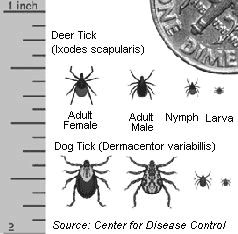|
|
|
|
|
|
|
Newsletter 24 – April 30, 2018 |
| Dear Patients, |
| I love sharing some of my patients' emails and videos; here are two recent ones: |
| "Life does not have to be perfect to be wonderful" |
|
And, this terrific 3:30 minute video, "The Professor and the
Coffee". Take the time to watch it, it will not disappoint you!
|
| BOOM update: |
|
Stacey and I are ready to start our final month of BOOM; we have
four more Wednesday at 7:15am sessions to go. Since the Athletic
Club has closed, we will have our remaining sessions at the Columbia
Gym in Clarksville. This gives us a few more bikes, so, more room
for interested people! I encourage any of you to join us. Even
though we have been doing this for 13 weeks, you can still join and
get the benefit. You may have to alter how many High Intensity
Interval Training (HIIT) cycles you do, but it is never too late to
work on getting healthier. A little bit of something is a lot
better than a lot of nothing.
|
|
If you need guidance on whether it is right for you, send me an
email. Space is limited, you either have to purchase a seat for the
remaining month ($40 total), or, if you are a CA member, it's free,
you just need to make the call or sign up online.
|
| Please note that the details regarding days and dates in the video DO NOT pertain to this upcoming session! |
| Here are registration instructions: |
| Columbia Association members: there is no charge. Sign up online through the CA website or app beginning at 2:00pm on Monday for that week's class. Or call the Columbia Gym 410-531-0800 beginning at 2:00pm on Tuesday. |
| Non-members: the session of 4 classes can be purchased for $40 either in person at the Columbia Gym or by phone. Please note there is no pro-rating or partial refunds; it is $40 for the month, regardless of how many you come to. |
| Spring means the ticks are coming! |
| Due to the relatively mild and wet winter, scientists are predicting a banner year for these pests. |
| Here is my 2018 tick update: |
| People don't realize how small ticks can be. A baby tick can be the size of a poppy seed! |
 |
| Deer ticks can transmit Lyme disease. Dog ticks can carry other illnesses such as Rocky Mountain Spotted Fever (relatively uncommon today). |
| A tick needs to feed on you for 48 hours to give you Lyme disease, only about 60% of people who get Lyme remember being bitten by a tick. |
| The incubation period for Lyme disease is 3 - 21 days, 60-70% of people with Lyme disease get a rash. Often, active acute Lyme disease causes flu-like symptoms. More chronic Lyme disease can cause a variety of problems, including rheumatologic, cardiac and neurologic issues. |
| Most tick bites (unrelated to the presence of the bacteria that causes Lyme disease) will cause a local reaction from the tick's attachment and secretions. If this rash starts to expand on a daily basis to the size of a half-dollar or larger, and particularly, if the center of the rash clears (target appearance) we will assume you have contracted Lyme disease and put you on doxycycline or amoxicillin. If the rash does not expand, then there is no concern that this is Lyme. |
| For most people, the tick bite tends to itch and feel firm (indurated) when you touch it. It is not unusual for the area to be the size of a dime to quarter. It's okay to place a little topical OTC hydrocortisone on the area 2-3 times per day. |
| Finally, anyone living in a tick-infested area, or with a history of a tick bite, who gets flu-like symptoms from April to October (this is not a time when viral influenza is prevalent) should be evaluated for Lyme disease. The treatment threshold with antibiotics is low. |
| I'm available anytime so if there is a change in the rash and/or if you have questions, call me. |
| Spraying the perimeter of your house may be helpful in reducing the total tick burden around the house. Alternatively, you can use perimeter mouse feeders that coat the mice with a tickicide as the mice go through the bait house. Once the mice go back to their nest, they share the tickicide with the other mice and thus the population of ticks is reduced. However, the best strategy is active self-inspection after possible exposure. Stay out of tall grass, and when you are camping, prudent use of insect repellent which contains DEET is recommended. When you are hiking, stay on the trail. Ticks are questing mammalian blood once the temperature goes above 37F. The ticks are positioned on the tips of tall grass and wait for an unsuspecting mammal (deer and humans) to brush against the grass. |
| Here is some more information that may be helpful: |
|
Dr. Aucott (Director of the Lyme Center of Johns Hopkins)
and yours truly, All About Lyme Disease (12
minute video):
|
|
And here is some information about ticks and
Lyme in Maryland:
|
| Wishing you well, |
| HAO |
|
Harry A. Oken, M.D.
Office: 410-910-7500
Fax: 410-910-2310
Cell: 443-324-0823
Adjunct Professor of Medicine
University of Maryland School of Medicine
|

